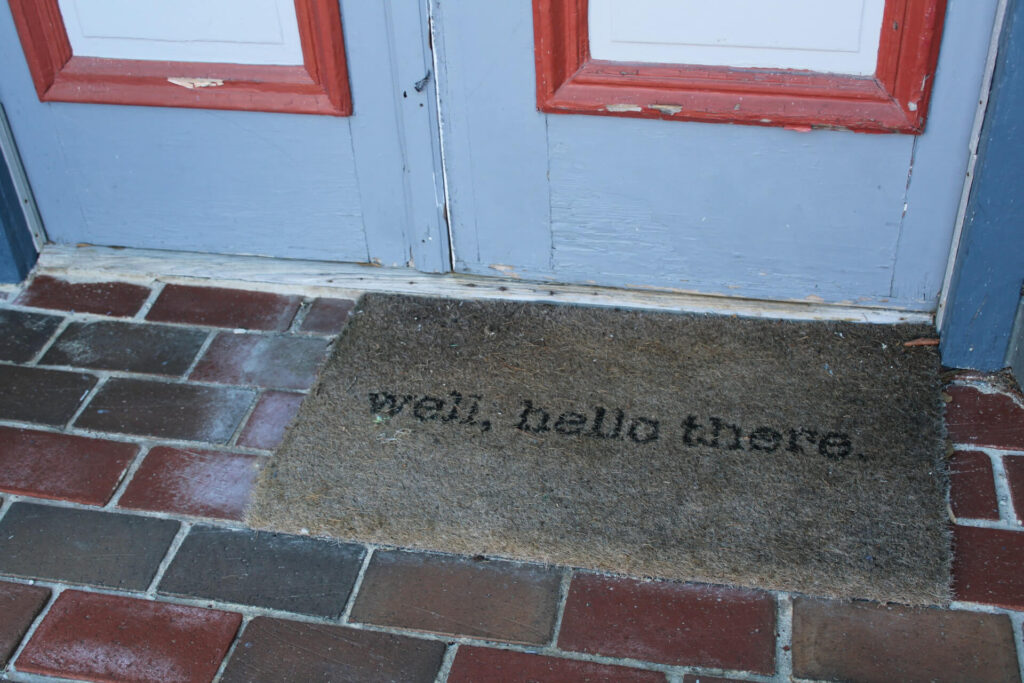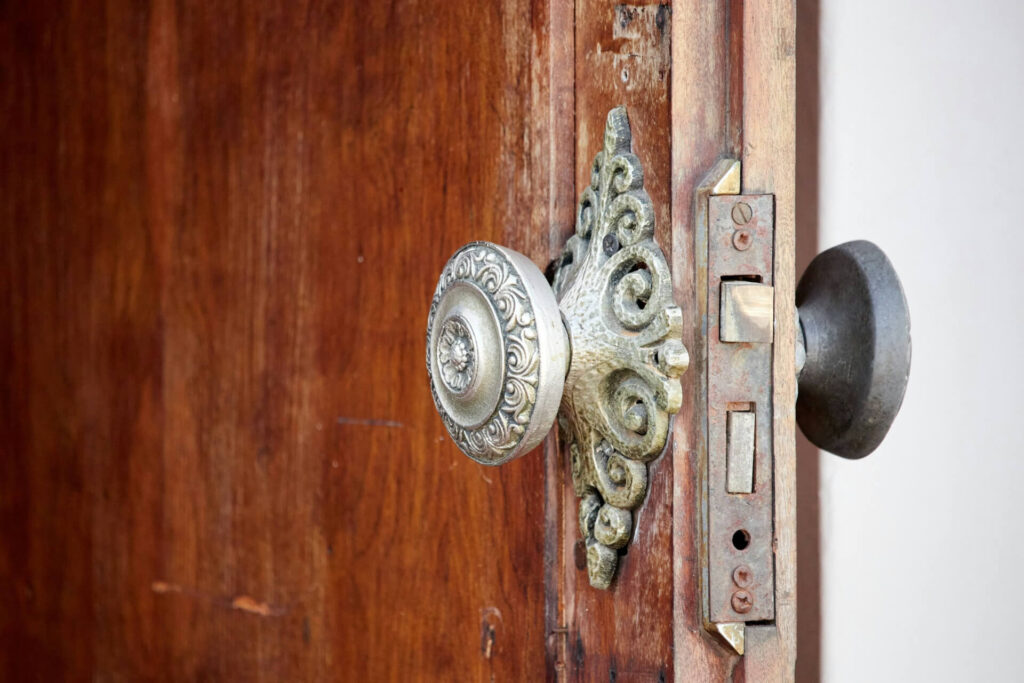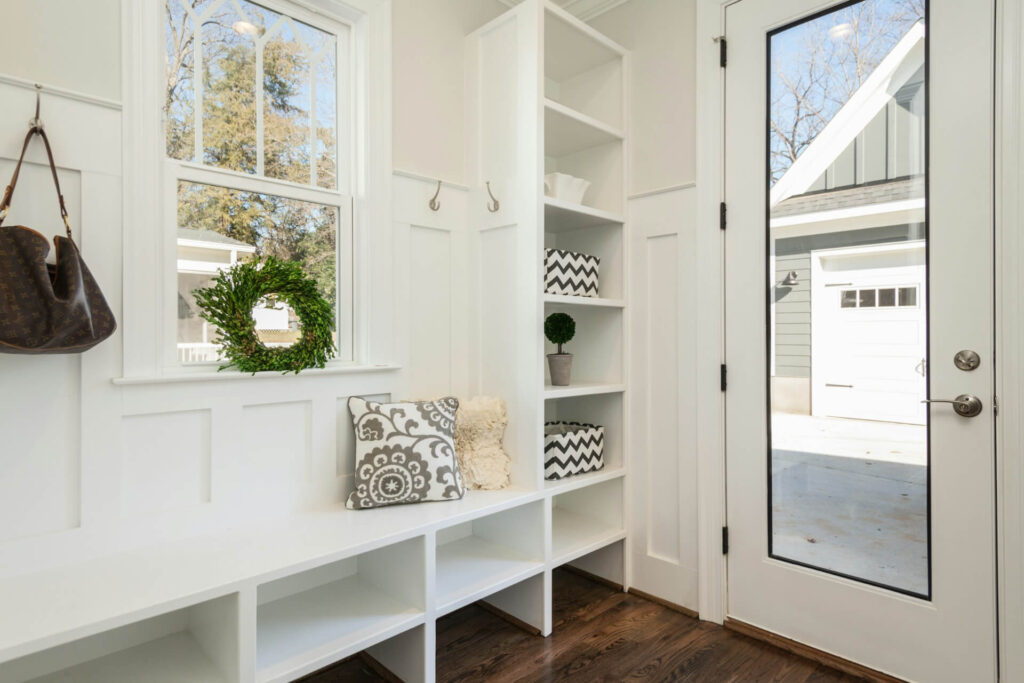How to Fix a Sticking Door: Identifying the Cause and Implementing Solutions

We are reader-supported. When you buy through links on our site, we may earn an affiliate commission.
Doors are meant to glide open, not groan. When they stick, it’s usually a sign that something in your home’s structure or climate control is off. A sticking door fix may be needed because of moisture issues, shifting foundations or worn-out hardware. While these are minor annoyances, they can escalate into more significant problems if left unaddressed.
This guide walks through diagnosing the reason your door sticks and the most effective ways to fix it. Whether you’re selling a home or simply tired of forcing the entry door shut, these solutions keep things running smoothly year-round.

What Causes Doors to Stick?
A sticking door usually occurs due to moisture, movement or mechanical wear. Before you grab a sander or plane, pinpoint what’s behind the problem.
| Common Cause | How It Happens | Signs to Look For |
| Humidity and swelling | Wood absorbs moisture and expands during humid months. | A tight fit at the top or latch side, especially in the summer. |
| Foundation shifts | Seasonal temperature swings cause the home’s frame to move. | Uneven gaps between the door and jamb. |
| Loose or rusted hinges | Screws loosen over time, causing misalignment. | The door sags and rubs the floor or frame. |
| Paint and varnish buildup | Repeated coats make the door too thick for the frame. | Rough edges where paint layers overlap. |
| Warped flooring or carpeting | Changes in floor level or plush carpet pile drag against the bottom edge. | Door drags at the threshold or carpet edge. |
“Buyers are mostly looking for move-in-ready homes. While cosmetic touches are nice, ensuring that the ‘bones’ or mechanicals of a home work well is vastly more important,” says realtor Maureen McDermut, at Sotheby’s International-Montecito. A bathroom or front door that sticks may seem minor, but to a potential buyer, it signals deferred maintenance where “minor” issues were not addressed by the seller as they focused on other, more pressing repairs.
Why Does My Door Stick in Summer?
High humidity is the most common seasonal culprit. Warm air holds moisture, which wood fibers absorb, causing them to swell. This can cause the door to be too snug within its frame.
To test it, close the door and run a sheet of paper along the edges. If it snags or tears, you’ve found your pressure point.
Quick fixes include running a dehumidifier to stabilize indoor moisture levels in damp-prone areas, inspecting weatherstripping to ensure it’s not trapping condensation or applying a thin coat of furniture wax along the door edge for smoother motion.
If the swelling is minimal, the door will often return to normal once the weather dries out. Take the time to add door inspections to your fall maintenance list and ensure a snug, but functional energy envelope in winter, while avoiding door sticking in summer.

How to Fix a Door That Won’t Close All the Way
When your door doesn’t latch, alignment is likely off. Loose screws or warped hinges can throw the strike plate out of position.
What to do:
- Tighten the hinge screws: Start with the top hinge, as a slight shift here can correct sagging.
- Adjust the strike plate: Loosen its screws, reposition slightly, then retighten.
- Use longer screws: Replace short screws with 2½-inch ones that reach the wall stud for lasting support.
- Last resort: If that doesn’t solve it, remove one hinge pin and gently tap it straight with a hammer before reinstalling.
This video explains exactly how to replace a short screw with a longer one and why doing this will ensure a more secure door.
How to Fix a Door That Rubs Against the Frame
Doors that rub on one edge often need minor hinge adjustment or light planing.
| Tools | Steps |
| Screwdriver | 1. Check the hinge depth. If one sits too shallow, back out the screws, place a thin cardboard shim behind it, and retighten. |
| Sanding block or hand planer | 2. Plane only if necessary. Remove the door from its hinges and shave small amounts, 1⁄16 inch at a time, from the tight spot. |
| Level | 3. Seal the exposed wood. After you plane the surface, apply primer or paint to prevent future swelling. |
How Do You Adjust Door Hinges to Prevent Sticking?
If tightening doesn’t help, your hinges may be out of alignment.
To reset them:
- Realign the hinge knuckles. All pins should form a straight vertical line.
- Replace worn hinges. Rust or bent metal can cause uneven motion.
- Lubricate with silicone spray. Avoid oil-based products that attract dust.
- Reinforcing the hinge side with longer screws. Longer screws can better support the door’s weight, which can also help pull a sagging door back into square alignment.

Can Humidity Cause Doors to Stick?
Absolutely. Interior humidity above 60%, such as you’d experience in the tropics, can cause wood to expand significantly, potentially jamming a door in its frame. Maintaining humidity levels at 30% to 50% helps stabilize wood movement while keeping indoor humidity at optimal levels.
Consider investing in a hygrometer to monitor indoor moisture and a small dehumidifier for problem rooms. It’s a simple fix that can prevent costly door replacements in the future.
How to Fix a Door That Drags on Carpet
When the door scrapes the floor or catches on carpet, you have two main options:
| Options | Solutions |
| 1. Adjust the hinges | Tighten or shim the top hinge to lift the door slightly. |
| 2. Trim the bottom edge | Mark the drag area.Remove the door and trim no more than 1/4 inch at a time.Sand smooth and reseal the cut edge.Always check for uneven flooring before cutting, as a warped subfloor might be the real issue. |
What Tools Do I Need to Fix a Sticking Door?
Here’s a quick list of basics to keep on hand:
| Tool | Purpose |
| Phillips and flathead screwdrivers | Tighten or adjust hinges and plates |
| Hammer and nail set | Straighten hinge pins |
| Sandpaper or hand planer | Shave swollen wood |
| Level | Check frame alignment |
| Shims or cardboard | Adjust hinge depth |
| Silicone spray | Lubricate hinges quietly |
| Dehumidifier | Reduce indoor moisture |

Should I Plane a Sticking Door or Call a Professional?
Planing can be an effective fix for a sticking door when other adjustments don’t help, but it should be a last resort. Only remove small amounts and reseal the exposed wood. If the sticking persists after planing, your problem may lie in the frame or foundation, not the door itself.
“I always say to focus on the basics and not the bells and whistles,” says investor and realtor Andrew Fortune of Great Colorado Homes. “Take your time reading the inspection, then call a local contractor before making any final decisions. People who rush the process often end up with homes that look pretty but have hidden headaches.”
A professional can determine whether you’re dealing with a simple alignment issue or a more complex structural concern. They may also be able to give you a more accurate idea of what costs your new investment’s sticky doors may require. Sanding a door is a quick and inexpensive fix, but a warped metal door frame may indicate underlying dangers, such as wall movement or rising damp.
You can typically handle most sticking doors by tightening, planing or adjusting humidity control. But if you notice cracks around the door frame, gaps that widen seasonally or uneven floors nearby, it’s time to consult a contractor if you haven’t already. Structural shifts or foundation settling require specialized repairs.
Calling in an expert ensures your quick fix doesn’t mask a larger issue and keeps your home move-in ready for years to come.
Keep Your Home Comfortable and Functional
A sticking door fix might seem simple, but it’s also a chance to check in on your home’s overall health. Humidity control, solid hardware and sound framing all play a role in daily comfort.
Addressing the small signs early saves you the frustration of forcing a jammed door and prevents hidden damage later. Start with the basics, make smart adjustments and when in doubt, get professional eyes on the problem, because the smooth swing of a well-fitted door is one of those little details that make a house feel like home.







